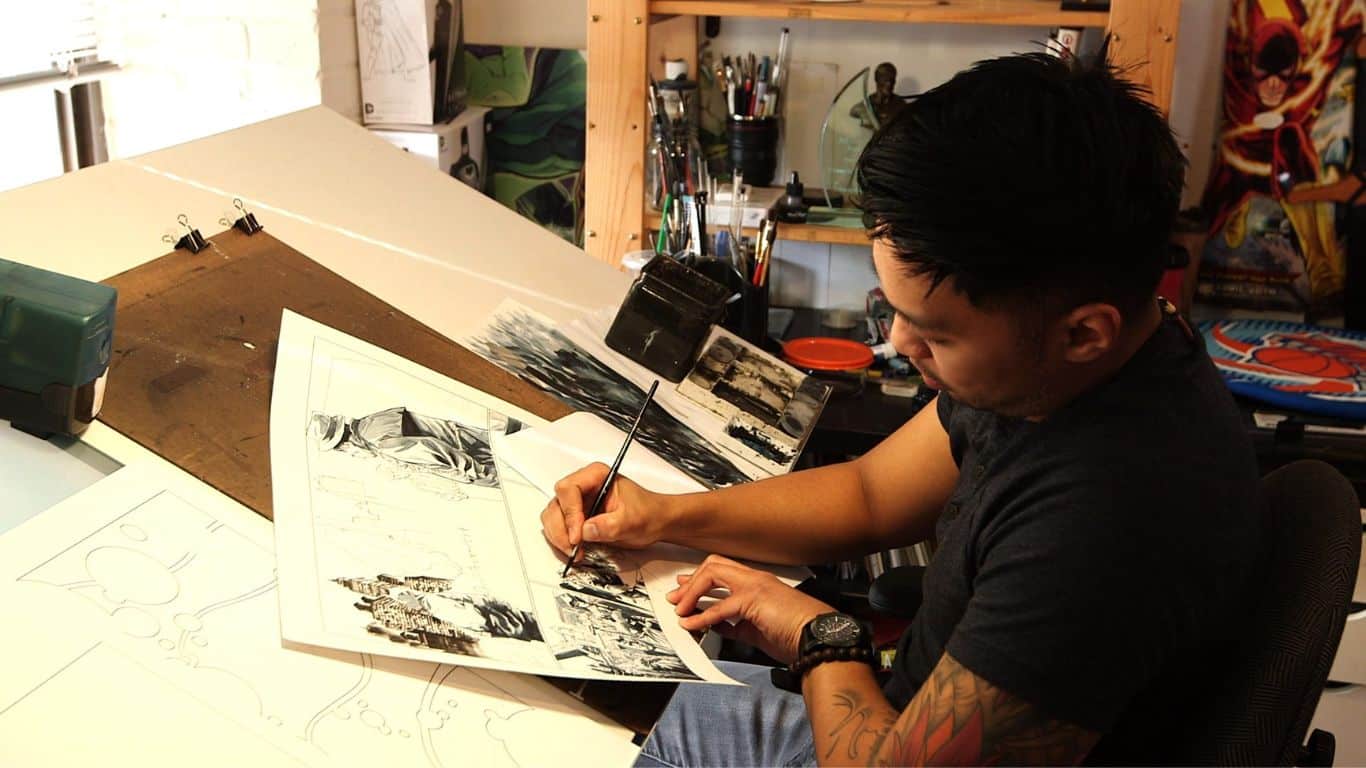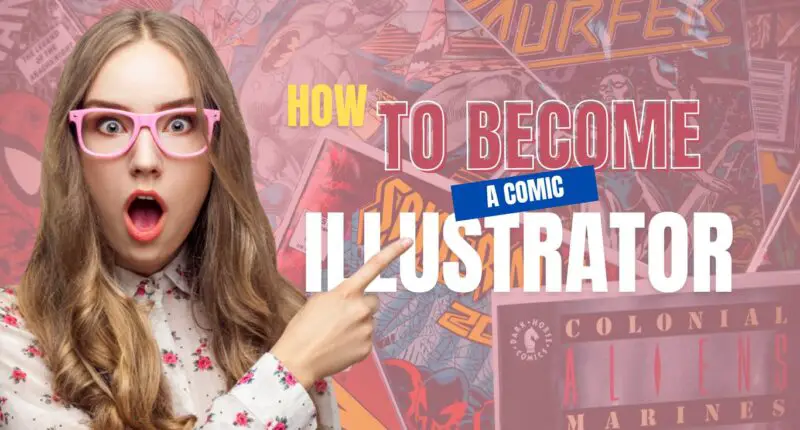How to Become Comic Illustrator: There are many reasons someone might want to become a comic illustrator. Some people are drawn to the creative process of visual storytelling, and enjoy bringing characters and plots to life through artwork. Others may be attracted to the opportunity to express their own ideas and perspectives through the medium of comics. Becoming a comic illustrator is a challenging but rewarding career path that requires a combination of talent, hard work, and dedication. Here are the steps you can follow to become a comic illustrator:
How to Become Comic Illustrator
Develop your skills

Developing skills as a comic illustrator involves a combination of practice, study, and hard work. The more you draw, the better you will become. Try to set aside time each day to draw and practice your skills. Look at the work of professional comic artists and see how they approach composition, character design, and storytelling. This will help you develop your own style and techniques. Consider taking a class or workshop to learn from an experienced artist. This can help you learn new techniques and get feedback on your work.
Connect with other artists, either in person or online, and share your work with them. This will help you get feedback and support as you continue to develop your skills. Don’t be afraid to try new techniques and approaches to your art. This will help you find your own style and voice as an artist. Remember that becoming a skilled comic illustrator takes time and dedication, so be patient and keep working at it. With consistent practice and a willingness to learn and improve, you can develop your skills and create amazing comics.
Create a portfolio

To create a portfolio as a comic illustrator, start by selecting your best work to showcase your skills and abilities. This can include finished comics, character designs, concept art, or other illustrations that demonstrate your style and techniques. Arrange your work in a logical order, such as by theme, style, or technique, or create a narrative flow by grouping related pieces together. Make sure to include a range of styles and techniques in your portfolio to showcase your versatility as an artist.
When presenting your work, create a clean and professional layout using high-quality scans or photographs of your work. Along with your artwork, include a resume or CV that outlines your education, experience, and any relevant skills or accomplishments. Remember to regularly update your portfolio as you continue to develop your skills and create new work. A portfolio is an important tool for finding work as a comic illustrator, so take the time to create a strong and professional portfolio that showcases your skills and abilities.
Find opportunities to showcase your work

To find opportunities to showcase your work as a comic illustrator, consider submitting your work to art contests, sharing your work on social media platforms, joining online communities of artists, attending conventions and events, and setting up a website or online portfolio. Art contests and competitions can be a great way to get your work seen by a wider audience and potentially win recognition or awards. Sharing your work on social media can help you reach a larger audience and connect with other artists and professionals in the industry.
Joining online communities of artists and attending conventions and events can also be a great way to make connections and potentially find work as a comic illustrator. Setting up a website or online portfolio can make it easy for potential clients or employers to view your work and learn more about your skills and experience. Remember to regularly seek out opportunities to showcase your work and get your work seen by as many people as possible.
Network with other professionals

To network with other professionals as a comic illustrator, consider attending conventions and events, joining professional organizations, reaching out to other artists and professionals, sharing your work and seeking feedback, and participating in online communities of artists. Attending conventions and events can be a great way to meet other artists and professionals in the industry and learn about potential job opportunities. Joining professional organizations can also provide valuable resources and support for artists.
Reaching out to other artists and professionals and introducing yourself and your work can be an important step in building relationships in the industry. Sharing your work and seeking feedback can help you improve your skills and make connections with other professionals. Participating in online communities of artists can also be a great way to connect with other professionals and share your work. Networking takes time and effort, but it can be an invaluable way to build relationships and learn about potential job opportunities as a comic illustrator.
Find work as a comic illustrator

As an illustrator, your portfolio is your calling card. Make sure to include a diverse range of styles and techniques, as well as finished comic pages and character designs. Attend conventions and events, join online communities and forums, and reach out to other comic creators and industry professionals to build relationships and make connections. Create a website or blog to showcase your portfolio and use social media platforms like Instagram and Twitter to share your work and connect with potential clients.
Consider working with an agent: An agent can help you find work and negotiate contracts, freeing up time for you to focus on your craft. Be willing to take on smaller or unpaid projects to gain experience and build your While it can be frustrating to take on unpaid work, these projects can be a great way to gain experience and build your portfolio. Stay up to date with industry trends and techniques, and continue to improve your skills and craft.
Continuously improve your skills

Here are several ways to improve your skills as a comic illustrator continuously. The more you draw, the better you will become. Set aside dedicated time each day to work on your craft and try new techniques and styles. There are many online courses and workshops available that can help you improve specific skills or learn new techniques. Seek out feedback from other comic creators or industry professionals to get a fresh perspective on your work and identify areas for improvement.
Attending conventions and events can be a great way to learn from others in the industry, meet potential clients, and stay up to date with industry trends and techniques. Don’t be afraid to try new techniques or styles, even if they are outside of your comfort zone. This will help you grow as an artist and keep your work fresh. Always be on the lookout for new ways to improve your skills and try new things. The more you learn, the more you will grow as an artist.
Besides these steps, it is also important to develop your storytelling skills as a comic illustrator, understand the business side of the industry, stay motivated and focused, and seek feedback and critique on your work. With dedication and hard work, you can turn your passion for comics into a rewarding career as a comic illustrator.
Also Read: Tips for Readers Looking to Pick a Perfect Genre



